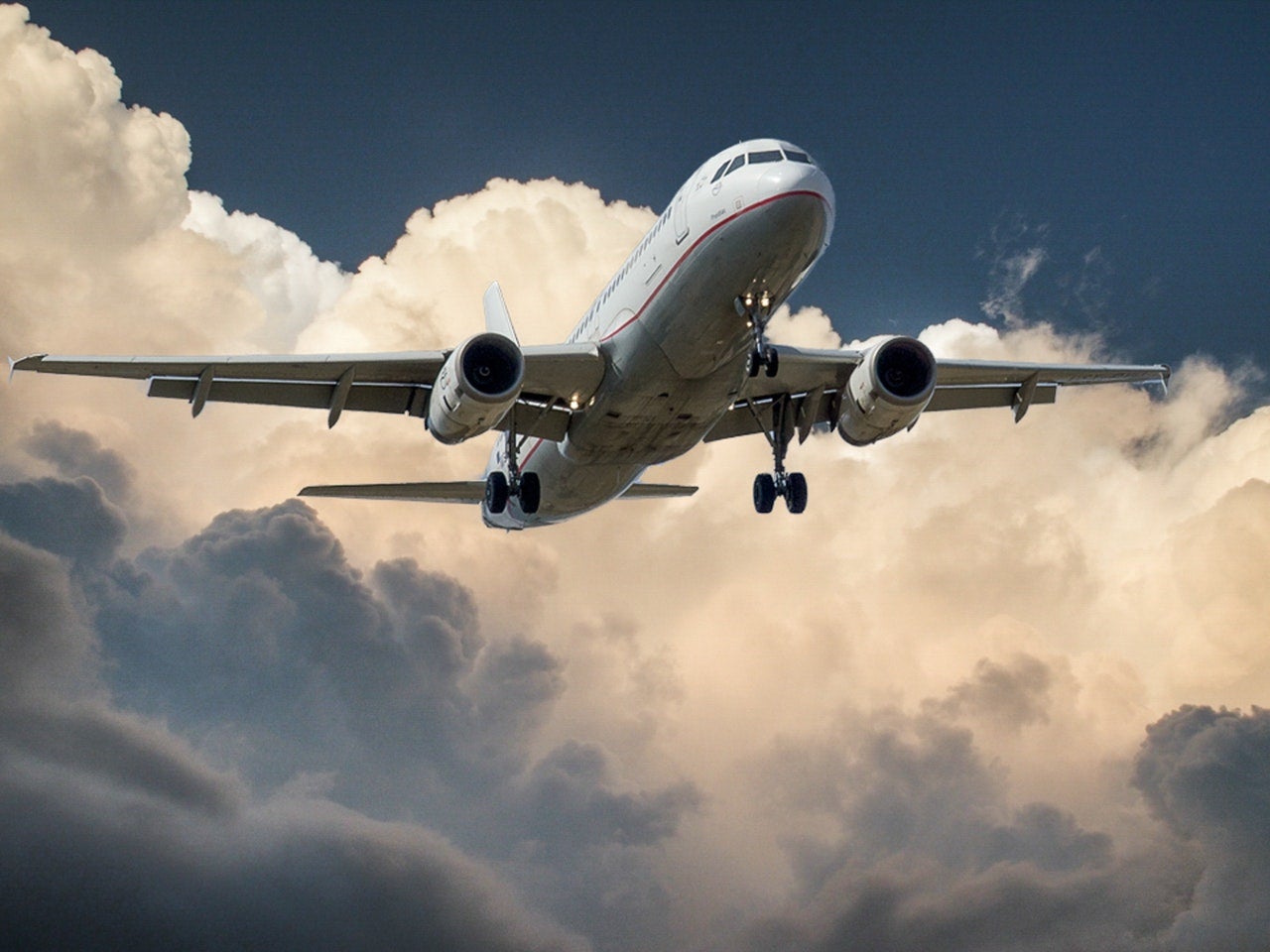
With only a few weeks left until the end of 2020, the aviation industry needs to pick itself up and begin rebuilding. In less than 12 months, the coronavirus pandemic has emptied its pockets and wiped out passenger numbers, leaving it vulnerable to a global economic recession and in desperate need of recovery.
Below, we asked some leading aviation members to draw their conclusions from this damning year and answer two key questions: what should a five-year plan for the aviation industry look like? And building on that, what should a ten-year plan look like – presuming passenger numbers bounce back, and growth returns to the agenda?

Discover B2B Marketing That Performs
Combine business intelligence and editorial excellence to reach engaged professionals across 36 leading media platforms.
What should a five-year plan for the aviation industry look like?
Luis Felipe de Oliveira, director general at Airport Council International (ACI) World
 Credit: ACI World.
Credit: ACI World.
The industry will recover only if we really work together. We are trying to create a framework that allows us to work with governments and convince them to replace the quarantines and lockdowns with a risk-based approach and tests. That would mitigate the impact of future rates and infections around the world.

US Tariffs are shifting - will you react or anticipate?
Don’t let policy changes catch you off guard. Stay proactive with real-time data and expert analysis.
By GlobalDataWe’ll never go back to the same normal we had before so the industry will need to adapt in the same way it did [after] 9/11 and its new security standards. Hygiene and health standards will need to change too and in the future, we’ll need something that provides the public and government with confidence that transmission is not linked with the aviation industry.
We expect to recover globally around early/mid-2023, however certain parts of the world will recover only in 2024-2025. Our short and mid-term plan, which [converges] into our Vision 2025, is to turn ACI into a more relevant and efficient association for our members around the globe.
Andrew O’Connor, vice president of Airports and Borders at SITA
 Credit: SITA.
Credit: SITA.
Airlines and airports […] need to adopt new safety measures to meet the new health requirements being introduced to reduce [hand contact] in the airport, ensure social distancing and remove some services from the airport to reduce congestion.
Leveraging the connected aircraft to optimise flight operations will also be pivotal to recovery and help drive efficiencies. For example, aircraft data management to monitor an aircraft’s components and onboard equipment can transform airline operations and reduce expenditure, whether that’s for predictive maintenance to monitor breaking parts, improving fuel usage [or another purpose].
Aviation’s future profitability will depend on a digital shift. The air transport industry will need to consider and use the right platforms to enable travellers to move seamlessly through the airport.
Introducing resilient, intelligent and agile systems that increase efficiencies and can respond to unpredictable fluxes in passenger numbers will become the determining factor for a sustainable future. For aircraft, this digital shift will be mainly around digitising operations for smarter working through greater communication on board and air/ground.
Chris Goater, assistant director of corporate communications at the International Air Transport Association (IATA)

Our first priority is to work with governments to encourage them to open up borders and relax quarantine measures. Until this happens, travel, tourism and trade will remain in the doldrums. In particular, airline debt levels are increasing as they take on loans to get them through the current crisis.
In general, the industry will need to demonstrate to its customers that we remain a safe industry. Giving travellers the confidence to fly will be crucial. The industry will need to focus on resilience in the face of possible future pandemics.
We may have to live with restrictions and comprehensive health measures for some time, so all parts of the industry will need to adapt to that. An example is removing pinch points at airports to help with social distancing.
Jo Dardenne, aviation manager at Transport & Environment
 Credit: Transport & Environment.
Credit: Transport & Environment.
The next five years for the aviation sector need to be focused on ‘greening’ its recovery. Channelling efforts towards addressing aviation’s climate impact is the only way to ensure the sector is future proof. Without green strings attached to the multi-billion bailout packages given to the sector, we risk going back to pre-crisis pollution levels, with low-cost carriers and subsidised national airlines driving a price war to the bottom.
The impact of Covid-19 on aviation emissions in 2020 and the rate at which the industry is likely to bounce back create an opportunity to make 2019 the “peak” year for aviation emissions in Europe, especially as we will see the growing deployment of technology and increasing societal shifts from air travel. In the next five years, Europe and its member states should use that chance to turn off autopilot and steer aviation towards sustainability.
Florian Guillermet, executive director of the SESAR Joint Undertaking
 Credit: SESAR.
Credit: SESAR.
The reduced liquidity of the sector makes collaboration and the need to align our future investments more important than ever. Starting now, we must work [to bring] to market solutions like the SESAR airport operations centre to improve data sharing between airlines, airports and other stakeholders to manage passenger flows and sanitary measures.
We also need to use this opportunity to implement the solutions that we have proven will make air traffic management more resilient to disruptions, building in flexibility to shift capacity in line with demand, rather than managing demand to fit available capacity.
Dr Saba Al-Rubaye, senior lecturer at Cranfield University
 Credit: Cranfield University.
Credit: Cranfield University.
Connectivity and big data will undoubtedly be a key requirement of the future of the aviation sector. The acceleration of technology means airports and airlines need to plan better, track technology and regulatory developments, and adapt to new transportation modes, so a new digital ecosystem can be in place and shaped to fully serve the passenger.
Ali Shah, CEO of TravelUp
 Credit: TravelUp.
Credit: TravelUp.
The industry must take some responsibility in adapting to the new reality. Many passengers are still experiencing frustrating refund delays. If we are to restore consumer confidence in the aviation industry, we need to make passengers feel like governments, airlines and travel companies are on their side.
TravelUp is proposing that the CAA introduces a new system, in association with IATA, whereby money is only transferred to the relevant airline once the flight has departed. This “trust model” would enable funds to be returned quickly if the flight does not leave and this new system would replicate what happens in other areas of the industry.
Ian Risk, chief technology officer at the Centre for Modelling & Simulation (CFMS)
 Credit: CFMS.
Credit: CFMS.
The aviation industry needs to focus its attention on building its skills and technology capabilities to help it meet its 2050 net-zero targets. We’ve just completed some research to identify the most polluting air travel routes and use this real-world data to then explore how zero-emission aircraft could be effectively developed to take over these routes.
The energy sources can vary according to the mission the aircraft needs to fulfil; some are simply not viable today for long-range aircraft. So, if these new vehicles are to be flying soon, then airport fuelling operations will need to diversify and provide a range of options, including hydrogen, electricity and synthetic fuel, as well as conventional jet fuel.
What should a ten-year plan look like – presuming passengers numbers bounce back, and growth returns to the agenda?
Luis Felipe de Oliveira, ACI World
Investment will have to be heavily focused on technology. In ten years we’ll probably see the totality or majority of airports using touchless technologies, biometrics, facial recognition. The way that the industry will adapt to improve health standards will continue as well with a lot of measures that will have to be linked with technology.
Andrew O’Connor, SITA
With the expected recovery, we anticipate that over the next five to ten years the industry will start to focus on a return to the ‘golden age’ of travel from the 50s and 60s. Border management, identity and risk, operations and automation will continue to be a focus area even after the pandemic.
Airports, for example, will look to make travel less visible and intrusive for the passenger so that passengers have a walkthrough airport experience. [With biometrics], once enrolled, your face becomes your passport so you can walk through an airport without using your passport and you will no longer have to stop at any touchpoint from check-in to boarding.
Chris Goater, IATA
The story of the decade to come will, we hope, be a return to traffic growth beyond the 2019 peak from 2024 onwards. This will mean that some of the key challenges that are associated with rising passenger numbers will come back. Two key examples are infrastructure and environment. Crowded infrastructure will be a problem and we know that we cannot expect to simply build our way out of it.
Similarly, airspace capacity is limited by political and procedural problems. These challenges are capable of being overcome, but the ‘pause’ in growth as a result of Covid-19 gives us a rare opportunity to get ahead of the game. We will need to work closely with our airport and air navigation service providers to ensure infrastructure, in terms of costs and capacity, is fit for purpose once this pandemic crisis is behind us.
With the environment, the implementation of the Carbon Offsetting and Reduction Scheme for International Aviation is so important.
Jo Dardenne, Transport & Environment
In the long term, the only way for the aviation sector to continue growing is to stop burning polluting and untaxed kerosene. Taxing jet fuel will not only encourage the development of more efficient aircraft that burn less fuel, but it will also reduce the price gap that exists today between polluting kerosene and clean fuels, especially electrofuels.
Today these fuels are still too expensive to deploy, but that’s why governments should focus on investing in facilities to increase production instead of bailing out the aviation sector unconditionally or giving them massive tax breaks.
Florian Guillermet, SESAR JU
With the low levels of traffic in recent months, people have grown accustomed to clearer skies and less noise, and are calling on the aviation sector to reassert their commitment to making flying more sustainable.
Data and new environmental metrics will also be key to monitoring the environmental impact of these solutions and incentivise actors to promote compliance with the targets and regulations put in place by Europe and the member states.
Dr Saba Al-Rubaye, Cranfield University
Without a reassessment of technology and infrastructure, it is uncertain how the industry, and the finite airspace it relies on, will accommodate the predicted data growth. Aviation industry experts can be better prepared to manipulate these deviations and leverage them successfully by being aware of the top trends for the future of aviation.
To enable these efficiencies, a new generation of technology, 5G and high-bandwidth satellite communication services is emerging to integrate an array of specialist applications with artificial intelligence, the internet of things and big data capabilities.
Ali Shah, TravelUp
In ten years, the pandemic should be a distant memory, with the travel industry thriving once again. If all goes to plan and the new trust system is implemented, we will have engendered a healthier relationship between airline, agent and passenger, and have years of customer feedback through which to further tailor our systems.
Ian Risk, CFMS
A ten-year plan should be all about building a more complex and diverse transport system that achieves net zero. Developing more flexible systems and using simulation to evaluate how and when investment is made must be a priority over this period.
Many industries are adopting digital technology to design, build and operate engineering projects more efficiently. Airport operators and developers should adopt the same systems to add in more planning flexibility and to help understand how to evolve airports successfully in conjunction with the rest of the transport system.
We’ll need to see much better collaboration between all stakeholders to make the industry sustainable in the interim.





